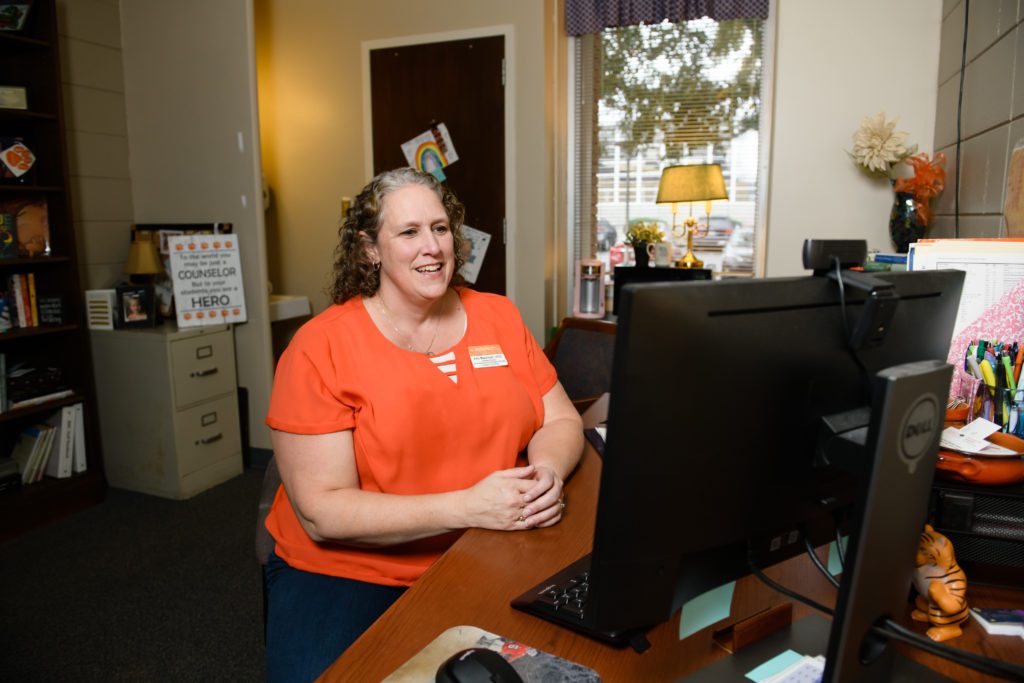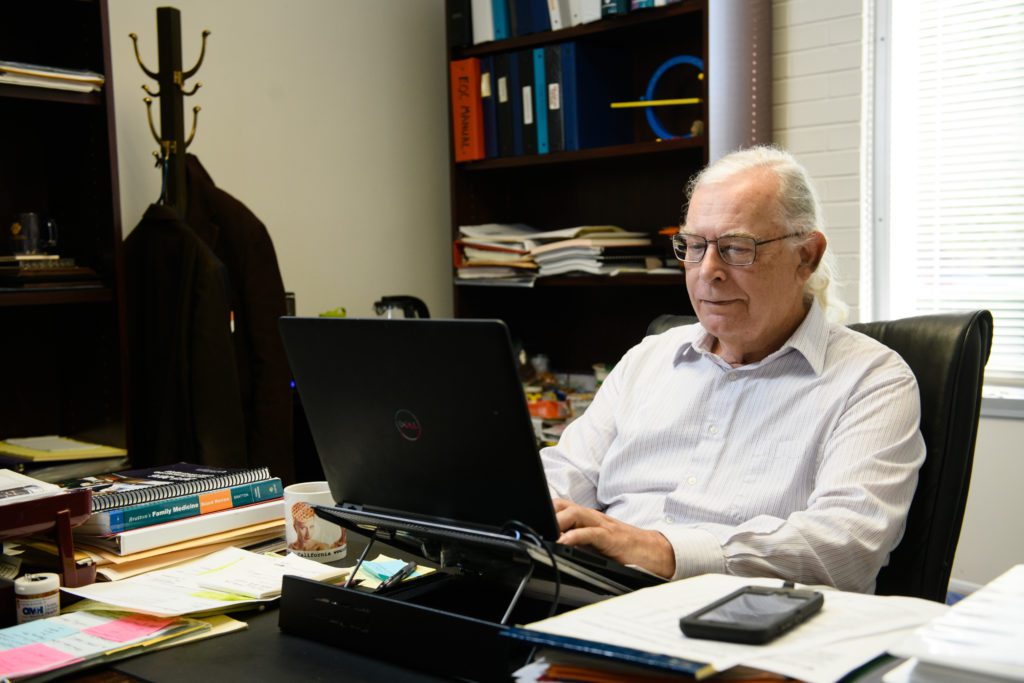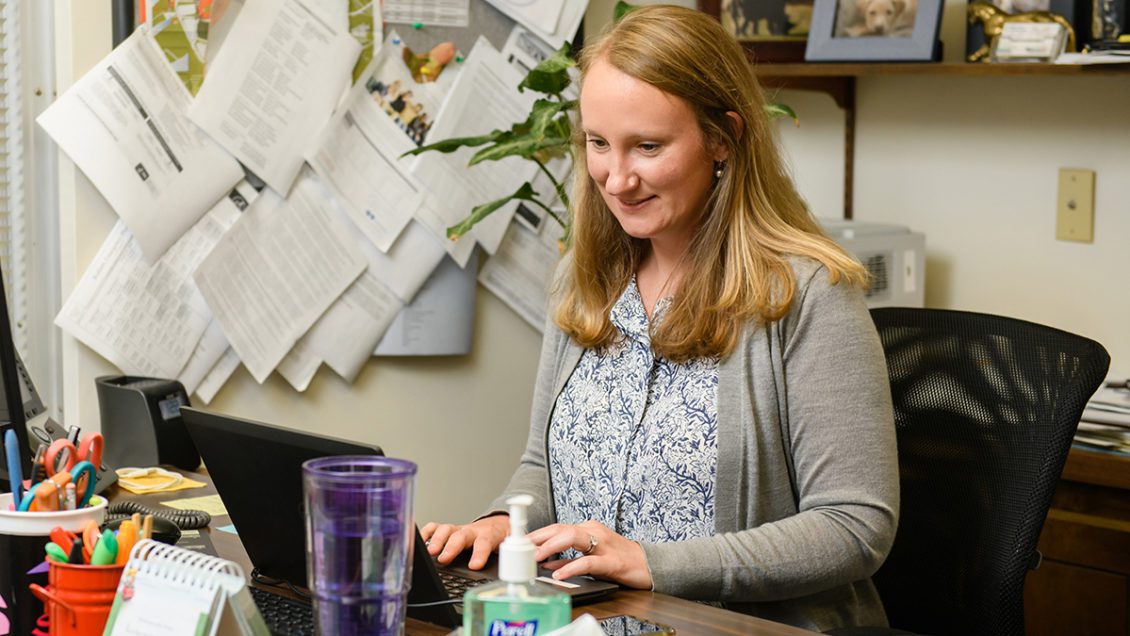The onset and continuation of a global pandemic has brought with it many lessons learned across Clemson University — perhaps none bigger than the importance of flexibility when modifying operations and service delivery methods.
Student Health Services is a prime example.
“We knew of the emerging trend of virtual health care and recognized it was something we needed to be doing more, but COVID certainly accelerated it,” said Dr. George Clay, executive director of Redfern Health Center. “It’s driven a dramatic increase in our capacity to serve students — both those physically present on campus and not. It’s definitely a benefit that’s come from COVID.”
Within Clay’s department, the Counseling and Psychological Services (CAPS) arm integrated telemedicine into its repertoire a few years back — only on a smaller scale.
Because the demand for mental health care had grown exponentially, CAPS often developed a lengthy wait time for patients. Many encountered barriers to physical access — such as limited on-campus parking for commuter students — while seeking counseling or psychological services.
Additionally, space was limited inside Redfern for students waiting to complete intake paperwork. This past summer — under the direction of Interim CAPS Director Dr. Birma Gainor — the intake process changed and gave way to a more efficient approach to care.
Students first engage in a phone screening with a CAPS professional, who asks a range of questions on presenting issues, risk levels and specific treatment needs if applicable. Then, the intake assessment takes place virtually, with the team lead assigning a modality — based on presenting needs — within a stepped care program.

All told, the new intake process has drastically reduced wait time for students since its implementation.
“Access to care is much faster,” Gainor noted, adding that a student’s commitment under past intake processes was often 90 minutes or longer. “Many students are saying it’s a relief to not have to come to campus.”
When the Fall 2021 semester began, Gainor’s staff continued to conduct primarily virtual visits — with the exception of students who presented at higher risk levels. Providers were given leeway to determine whether or not to meet with a student in-person, when providing individual counseling. As the omicron wave has permeated the University community, CAPS providers are only meeting virtually to reduce risk.
The numbers reflect the uptick in online coverage. From June through December 2021, more than 7,000 individual and group services took place virtually — including more than 1,000 phone screenings. Gainor said while it differs significantly from in-person meetings, her team has trained to mitigate drawbacks in an online platform.
“Providers work to build relationships with students, so that it’s deep enough they trust you and will give you everything you need in a virtual setting,” she said. “It’s been very good in allowing access — students can camp out on their laptop from the comfort of their home.”
Like CAPS, Redfern’s Medical Services team has grown to rely more on telehealth as well, beginning in 2021. From July through December, nearly 700 virtual medical visits were conducted by Redfern doctors and nurse practitioners.
Dr. Lesslie Pekarek and her medical staff went through the types of medical complaints that were appropriate for telemedicine and ones that were not well-suited for it.
“We went through the entire spectrum,” she said. “During the appointment-making process, a student can select whether they want a virtual or in-person visit. The demand for in-person typically exceeds that of virtual care, but we’ve seen periods of time where it has flip-flopped.”

Currently, Pekarek’s staff has one provider — Dr. Kathryn Barden — who works remotely and conducts entirely virtual visits. Another staff physician, Dr. Maria Oliveira, sees a combination of students virtually and in-person.
“It’s been a huge efficiency for us, because it allowed us to expand our clinical staff by one,” she said. “We put a new provider into Dr. Barden’s office suite and increased capacity.”
Pekarek said her team has pushed more of its respiratory visits to the virtual space — a trend largely paralleled through the Virtual Urgent Care platform offered through a collaboration with the Medical University of South Carolina (MUSC). Virtual Urgent Care is an asynchronous service available after-hours to students physically located in the state of South Carolina who have paid the school’s health fee.
From August through December, nearly 1,700 student visits were conducted by MUSC’s network of providers — the majority of which presented upper respiratory symptoms. The platform peaked with 677 virtual visits in the month of November.
Pekarek said telehealth has been a game changer at Redfern Health Center, validating Clemson’s ability to meet students where they are.
“The state is short on healthcare resources as it is, so these virtual solutions significantly expand access,” she said. “I’m grateful for these resources.”

